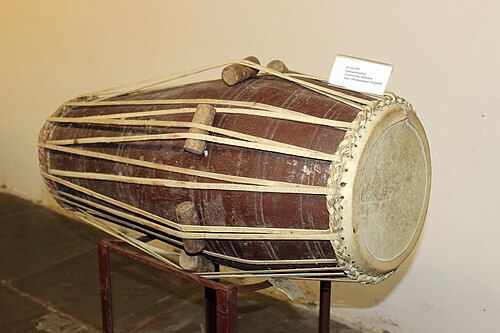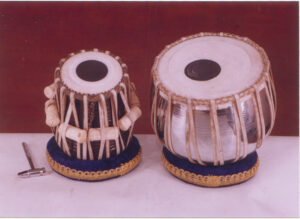Tala
Tala is an ancient music concept traceable to Vedic era texts of Hinduism, such as the Samaveda and methods for singing the Vedic hymns. The music traditions of the North and South India, particularly the raga and tala systems, were not considered as distinct till about the 16th century. There on, during the tumultuous period of Islamic rule of the Indian subcontinent, the traditions separated and evolved into distinct forms. The tala system of the north is called Hindustaani, while the south is called Carnaatic. However, the tala system between them continues to have more common features than differences.
Tala in the Indian tradition embraces the time dimension of music, the means by which musical rhythm and form were guided and expressed. While a tala carries the musical meter, it does not necessarily imply a regularly recurring pattern. In the major classical Indian music traditions, the beats are hierarchically arranged based on how the music piece is to be performed. The most widely used tala in the South Indian system is Adi tala. In the North Indian system, the most common tala is teental. (Wikipedia)
The Pakhavaj

The pakhavaj is a barrel-shaped, two-headed drum, originating from the Indian subcontinent, the oldest version of double sided drums and its descendants are mridangam of Southern India and kendang of Maritime Southeast Asia and other South Asian double-headed drums. Its older forms were made with clay.
It is the percussion instrument most commonly used in the dhrupad style of Indian classical music and less often used as a rhythm accompaniment for various other sub-forms of music and dance performances (e.g. kathak, odissi, marathi). It has a low, mellow tone that is quite rich in harmonics. The sides of the pakhawaj are made with animal skin (often goat, cow skin). The pakhavaj players place the instrument horizontally in front of themselves as they sit on the floor with legs crossed. The players may sometimes place a cushion under the narrower treble face to lift it slightly. A right-handed person places the larger bass-skin on the left side and the treble skin on the right. The bass face tends to be smeared with some fresh wheat dough which acts as the kiran and gives a vivid bass sound to the pakhavaj.
The tuning of Pakhavaj is similar to that of the tabla – with the wooden wedges placed under the tautening straps. Due to the varied thickness of the skin that covers the treble face, the treble face can produce at least two tones that are a semitone apart. For example, if hitting the centre (the bol दिन din) is tuned to produce the note C then hitting closer to the edge (with the bol ता for example) could produce the note C#. The fine tuning can be done with the woven outer ring (गजरा – gajra) which is an extension of the skin that the face is made of. It is only on the bass skin where a freshly made batter (or dough) of (wheat) flour and water is applied to provide enhance the low-pitched sound. While the options to use a polymer-based substitute are available but are not commonly used. (Wikipedia)
The Tabla

A tabla is a pair of hand drums from the Indian subcontinent, that is somewhat similar in shape to the bongos. Since the 18th century, it has been the principal percussion instrument in Hindustani classical music, where it may be played solo, as an accompaniment with other instruments and vocals, and as a part of larger ensembles. It is frequently played in popular and folk music performances in India, Bangladesh, Afghanistan, Pakistan, Nepal and Sri Lanka. The tabla is an essential instrument in the bhakti devotional traditions of Hinduism and Sikhism, such as during bhajan and kirtan singing. It is one of the main qawali instruments used by Sufi musicians. The instrument is also featured in dance performances such as Kathak. Tabla is a rhythmic instrument.
The name tabla likely comes from tabl, the Arabic word for drum. The ultimate origin of the musical instrument is contested by scholars, though some trace its evolution from indigenous musical instruments of the Indian subcontinent.
The tabla consists of two small drums of slightly different sizes and shapes. Each drum is made of hollowed-out wood, clay or metal. The smaller drum (dayan/tabla) is used for creating treble and tonal sounds, while the primary function of the larger drum (baya/dagga) is for producing bass. They are laced with hoops, thongs and wooden dowels on its sides. The dowels and hoops are used to tighten the tension of the membranes for tuning the drums.
The playing technique is complex and involves extensive use of the fingers and palms in various configurations to create a wide variety of different sounds and rhythms, reflected in mnemonic syllables (bol). (Wikipedia)
Tala
The Rhythmic Organisation of North Indian Classical Music
Pakhavaj
Pakhavaj Solos
